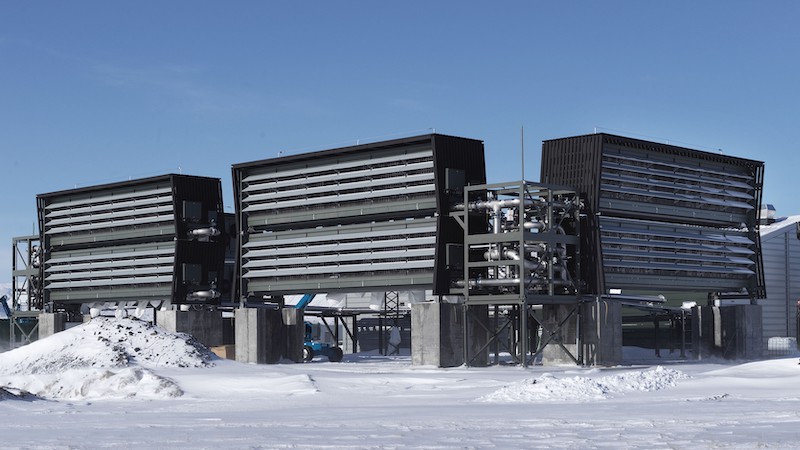The United Nations climate body has cast doubt over technologies that aim to suck carbon pollution from the atmosphere, calling them “unproven” and potentially risky.
In a briefing note, unnamed authors from the UN’s climate body (UNFCCC) said these removal activities are “technologically and economically unproven, especially at scale, and pose unknown environmental and social risks”. It concludes they are therefore not suitable for offsetting carbon emissions under the upcoming UN’s global scheme.
The UN assessment has angered the growing industry, which is seeing billions of dollars of investment from governments and corporations.
World Bank body delays vote on controversial loan to Brazilian dairy firm
More than 100 figures from the carbon removal industry signed a letter addressed to the UN body asking it not to rule out any specific activity, but to “let science, innovation, and the market compete to deliver the solutions”.
Crunch meeting
The document will inform discussions taking place next week in the German city of Bonn to set up a new global carbon trading system under Article 6 of the Paris Agreement.
A UN panel is tasked with drafting the rules and indicating which activities should be eligible. It is taking into consideration both land-based solutions, like tree planting, and technological ones, such as using machines to pull CO2 directly out of the air.
The process is being closely watched as the inclusion of certain technologies over others could have far-reaching consequences for the development of the sector.
Campaigners have raised concerns over the technical challenges of deploying these solutions and the potential risks to human rights.
But Ben Rubin, from the Carbon Business Council, told Climate Home News that leaving any carbon removal pathway off the table risks creating challenges to have the scale of climate impact that is needed.
Carbon removals role
As the world fails to curb the rise of polluting emissions, most scientists see some form of carbon removal as necessary to limit the impact of climate change.
The IPCC said the use of carbon removal is “unavoidable” to offset hard-to-abate emissions and achieve net zero. But how to achieve that result is the subject of intense debate.
Restrictions on energy firm’s borrowing complicates South Africa’s energy transition
At the moment land-based solutions, such as planting trees or preventing them from being cut down, account for 99.9% of all CO2 removed from the atmosphere.
But several governments, like the US, and companies are betting big on technological fixes.
The most prominent ones are Direct Air Capture (DAC) and Bioenergy with carbon capture and storage (BECCS). The first technology uses big machines to pull carbon dioxide directly out of the air and store it underground.
The second one relies on trapping emissions produced through the generation of biomass energy. Its proponents describe it as carbon-negative because it permanently locks away the CO2 trees used as biomass will have absorbed in their lifetime.
Multi-billion dollar bet
The industry believes it can scale up rapidly thanks to large-scale investment pouring into the sector.
The US government committed $3.7 billion towards the development of DAC. Major corporations are signing deals worth hundreds of millions of dollars to buy vast amounts of tech-based carbon removals as a way to offset their own emissions.
The industry also hopes to be supported by the creation of a new global carbon market. As part of Article 6 of the Paris Agreement, the new system will allow governments, companies and individuals to buy UN-certified credits, funneling money towards climate projects.
A supervisory committee is currently working out the complex details of how this mechanism will work, including the eligibility of certain projects.
In its briefing note, the UNFCCC said activities like DAC or BECCS are not fit for the purposes of Article 6.
Currently costly
Without going into details, it argues they are too costly, are not suitable for developing countries, and do not contribute to sustainable development.
The UN based its views on scientific papers and on submissions received by industry players and campaigners.
The International Energy Agency estimates that removing a ton of carbon dioxide costs between $135 and $135 with DAC today – although this could drop to below $100 by 2030.
According to the IPCC scientists, this is far more expensive than reducing emissions with renewable energy or energy efficiency.
Human rights risks
A recent study cited in the brief argues that the large-scale deployment of carbon removal technologies may lead to “significant human rights infringements”.
The risk may be particularly acute with BECCS which, to operate at scale, would require a vast amount of land and water to be converted from food production to growing biomass.
This will “most likely infringe upon the right to food, the right to water, and the right to a healthy environment”, the authors said.
The study found DAC would “likely have a smaller human rights impact” than BECCS. It doesn’t incentivise anything to be grown. But, as it requires a lot of energy, large-scale use of DAC could take electricity away from other uses.
Rich nations “understanding” of South African delay to coal plant closures
The UN document does not spell out why these carbon removal technologies do not contribute to sustainable development and the industry disputed this.
“We would be pleased to connect you with carbon removal leaders advancing projects in Kenya, Kiribati, India, Brazil and other locations around the world where CDR is contributing directly to local regional economic development”, their letter said.
The Center for International Environmental Law called carbon removal “a dangerous distraction”. The NGO argued that relying on removal technology, “both delays the immediate reduction of emissions and presents independent risks to human rights and the environment, some of which remain poorly understood”.
